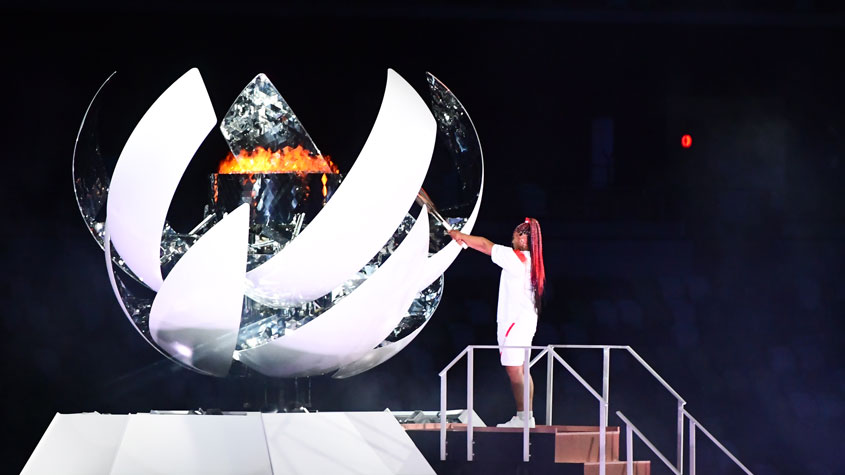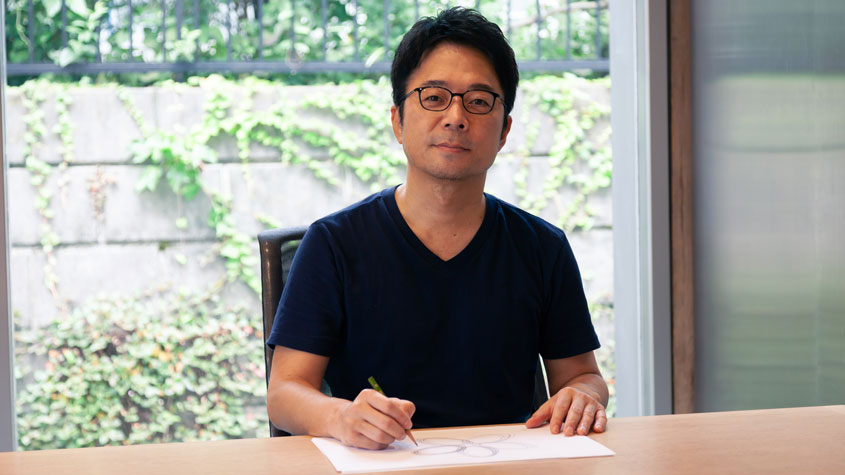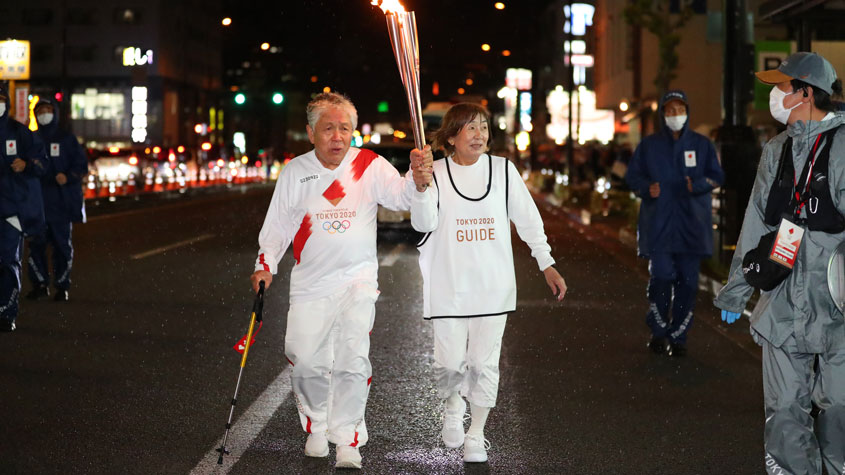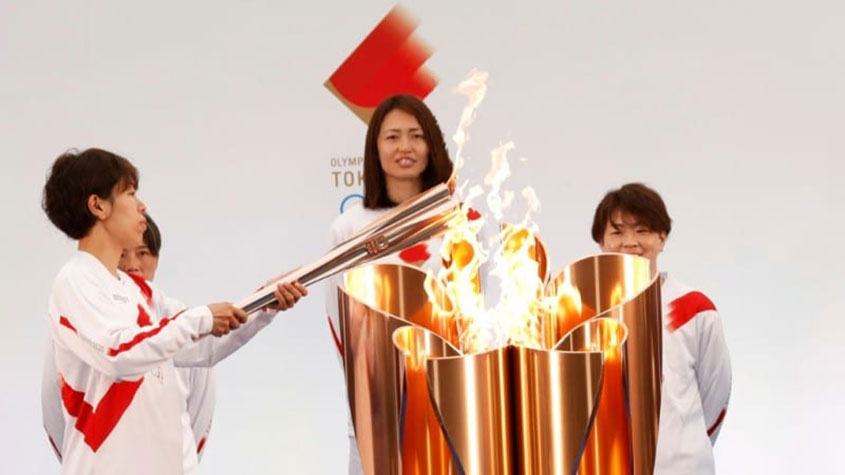By Catherine Jewell, Information and Digital Outreach Division, WIPO and Tomomi Taguchi, WIPO Japan Office
In late July, all eyes were on the Olympic Stadium in Tokyo when Japan’s top tennis player, Naomi Osaka lit the Olympic cauldron to mark the opening of the 2020 Olympic Games, which had been postponed for a year due to the COVID pandemic.

An icon of the Olympic Games, the Olympic torch symbolizes hope and peace and reminds us of the ancient origins of the world’s greatest celebration of sport. The Olympic torch relay, however, is a modern invention, first introduced in the 1936 Summer Olympic Games in Berlin. Each Olympic torch bears a unique design that represents the host country. World-renowned contemporary Japanese artist and designer Tokujin Yoshioka, who designed the Olympic torch for the 2020 Tokyo Olympic Games, unpacks the symbolism of his design and the message of hope it conveys.
What inspires your work?
I like things that go beyond the concept of materials and transcend human senses. I have a desire to add something in my work that impresses, delights or entertains people. I believe that the value and beauty created by nature is a very important element for this.
What does it mean to you personally to have been able to contribute to the Tokyo 2020 Olympic Games?
I am grateful for the opportunity to participate in this historic project. In 2013, when the decision was taken to hold the 2020 Olympic and Paralympic Games in Tokyo, I began to think about what I could do with my design. I designed the torch with the same energy and ambition as the athletes who take part in the Olympics.

What inspired the torch’s design?
The Olympic Games are full of meaning. They inspire and carry the feelings of many millions of people around the world. After Tokyo was elected as host city for the 2020 Olympic Games in 2013, I began thinking about how I could express my feelings for the people in the areas affected by the Great East Japan Earthquake of 2011, to the world through my design. Japan has experienced many natural disasters and the earthquake made me realize once again the kindness and sincerity of the Japanese people and the overflowing spirit of compassion and willingness to help each other even in times of hardship. I am sure that people around the world could feel it as well.
The Olympic Games are full of meaning. They inspire and carry the feelings of many millions of people around the world,
says Tokujin Yoshioka.
The inspiration for my design of the torch came in 2015, when I drew the “cherry blossom emblem” together with children in the disaster-affected areas. Like the powerful cherry blossoms drawn by the children, I designed the torch with the hope of showing the world the resilience of people living in these areas and the efforts they were making to recover from suffering.
Every spring, everyone in Japan looks forward to the blooming of cherry blossoms that marks the beginning of the season and creates a sense of well-being and the hope. My hope is that the torch relay will be a flame of hope that travels across Japan and just like the blooming of cherry blossoms connects people’s emotions.
About the Tokyo Olympic 2020 Torch Relay
The Olympic flame first arrived in Japan in March 2020. Following the postponement of the Games for a year because of the COVID pandemic, it was placed in the Olympic Museum in Tokyo.
The Olympic Torch Relay began on March 25, 2021, in J-Village national football training facility in Naraha, Fukushima, one of a number of areas hit by the 2011 Great East Japan Earthquake. The relay was planned around the concept “Hope lights our way,” reflecting the Olympic flame’s symbolism of hope and peace.
For 121 days, the torch travelled through the country’s 47 prefectures before arriving at the Olympic Stadium in Tokyo for the opening ceremony on July 23. A total of 10,515 torchbearers took part in the relay.

What does the torch’s design represent for you?
What I have expressed through my design of the torch is neither a beautiful design nor a cutting-edge technology, but a wish for the spiritual recovery of the people in the disaster-affected areas and for peace. In designing the torch, I actually designed the shape of the flame, which is a world first. Normally, the exterior design comes first, but I started by designing the flame in the form of cherry blossoms. Five separate flames emerge from five flower petals and come together as one at the center of the torch. This represents my wishes for global peace and unity.

What materials were used to make it (and why) and how was it made?
About 30 percent of the torch is recycled from aluminum used in temporary housing in the disaster-affected areas. I believe that the transformation of the temporary housing into the torch will give courage and hope to all people and will be a symbol of the resilience and courage of those living in disaster-affected areas.
The torch is designed from the structure itself, and is made using an innovative manufacturing process. The torch is integrally molded using aluminum extrusion − a technology used to make bullet trains and airplanes − which strengthens the structure and reduces its weight. The aluminum is extruded and machined into a cherry blossom shape to create a strong, seamless, sculptural form. By designing the torch from the manufacturing stage, I was able to create an innovative torch that symbolizes Japanese technology.
How the torch of the Tokyo 2020 Olympic Games is protected
The names and emblems of the Tokyo 2020 Olympic and Paralympic Games are protected in Japan under the Trademark Law, the Unfair Competition Prevention Law, and the Copyright Law. The design of the torch has been registered as a design in the name of the Tokyo Organizing Committee of the Olympic and Paralympic Games, and it is also the subject of an international patent application filed under WIPO’s Patent Cooperation Treaty (WO/2019/083012).
What is it about light and nature that inspires you?
Light and nature create a beauty that cannot be unraveled. In nature, I find a functional beauty that is created by life. It is something that moves the human heart. I believe these elements create a universal beauty.
Why are intellectual property rights important for designers and other creators?
A great design is not one that shapes the surface, it goes beyond shape, it is epoch-making and creates something completely new and universal. And the originality of such designs needs to be protected so that we can share the excellence of ideas. We are living in an age where it is difficult to create something new because of the infinite amount of information available. I feel that we are losing our ideas and motivation due to the homogenization of values. It would be wonderful if we could create a work and that everyone who sees it knows who created it.



